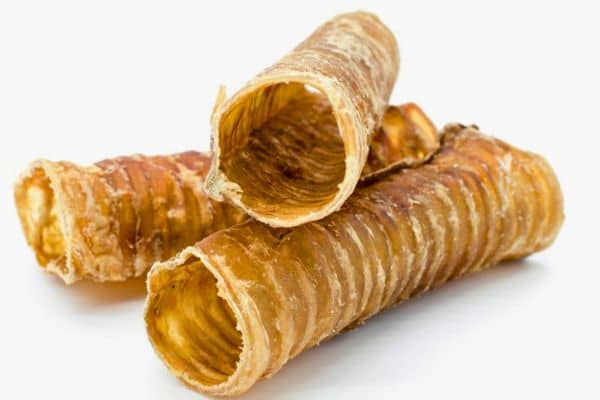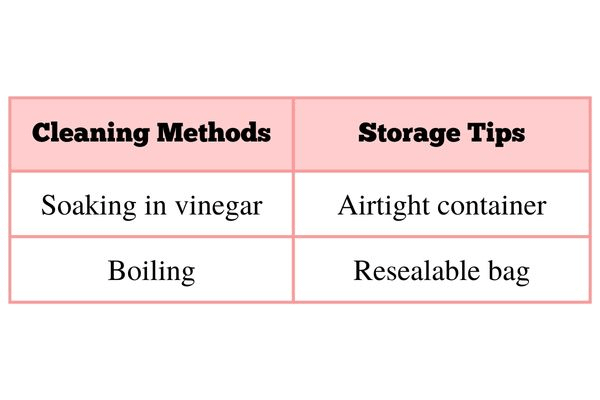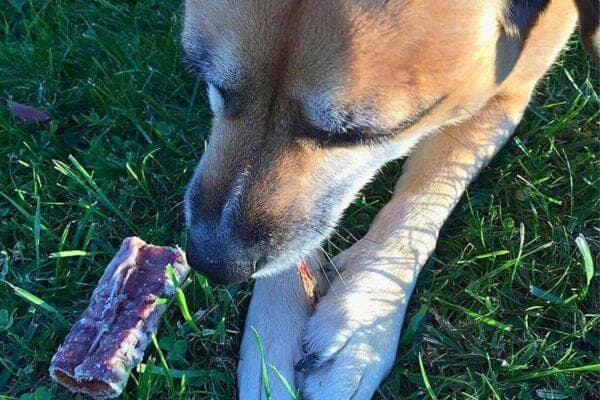Beef trachea is a commonly used dog treat due to its nutritional benefits and potential as a natural chew and dental aid. The trachea, which serves as the windpipe in animals, offers a unique texture and taste that can appeal to dogs of various breeds and sizes.
This article “Beef Trachea For Dogs” aims to objectively analyze beef trachea for dogs, focusing on its nutritional value, selection process, preparation methods, and suitability for different breeds.
By understanding the advantages of incorporating beef trachea into their pet’s diet, dog owners can make informed decisions about introducing this treat into their furry friend’s meal plan.
Additionally, this article will explore how beef trachea can serve as an enriching experience for both owners and their beloved pets by providing a satisfying chewing activity that supports overall dental health.
Nutritional Benefits of Beef Trachea for Dogs
Consuming beef trachea provides dogs with various nutritional benefits that contributing to their overall health and well-being.
The beef trachea is not only a tasty treat for our canine companions, but it also serves as a natural source of essential nutrients.

This unique chew offers an excellent balance of protein, vitamins, and minerals necessary for optimal canine nutrition.
Additionally, beef trachea can be incorporated into various recipes to provide dogs with a diverse and enjoyable diet.
The versatility of this ingredient allows pet owners to create homemade treats or meals tailored to their dog’s specific dietary needs.
As an alternative chew option, beef trachea promotes dental health by helping remove plaque and tartar buildup while satisfying the dog’s natural chewing instincts.
Including beef trachea in a dog’s diet can significantly enhance their nutritional intake and overall well-being.
How to Choose and Prepare Beef Trachea For Dogs
This section will discuss the key points when selecting and preparing beef trachea dog treats.
- Importance of choosing high-quality beef trachea
- Necessary steps for cleaning and preparing the treats
- Safe feeding guidelines and portion control to ensure the health and well-being of dogs consuming these treats.
Selecting High-Quality Beef Trachea
One key factor in choosing high-quality beef trachea for dogs is thoroughly examining its appearance. High-quality beef trachea should have a clean and fresh appearance, free from any signs of discoloration or mold.
Additionally, it should have a firm texture and be relatively odorless. It indicates that the trachea has undergone proper processing and storage, ensuring its safety and nutritional value for canines.
Choosing a high-quality beef trachea for dogs is essential because it offers numerous benefits for canine health. Beef trachea treats are rich in natural nutrients such as glucosamine and chondroitin, which promote joint health and mobility.
They also provide essential amino acids that support muscle development and repair. Moreover, the chewing action required to consume beef trachea treats helps to remove plaque buildup on teeth, promoting dental hygiene.
By selecting high-quality beef trachea for dogs, pet owners can ensure they are providing a safe and nutritious treat that contributes to their dog’s overall well-being.
Cleaning and Preparing the Treats
Proper cleaning and preparation are crucial for the safe consumption of treats. There are multiple ways to clean beef trachea treats. One popular method is to soak the treats in water and vinegar for a few minutes before rinsing them thoroughly with clean water.
It helps remove any dirt or bacteria that may be present on the surface of the treats. Another cleaning method involves boiling the treats for a short period of time, which not only helps sanitize them but also softens them for easier chewing.
Regarding storage tips, keeping beef trachea treats in an airtight container or resealable bag in the refrigerator is recommended. It helps maintain their freshness and prevents contamination from other food items.
Additionally, it is essential to regularly check the treats for signs of spoilage or mold before giving them to your dog.
By following these cleaning methods and storage tips, you can ensure that your dog’s beef trachea treats are clean, safe, and enjoyable for them to consume.
Safe Feeding Guidelines and Portion Control
It is imperative to adhere to safe feeding guidelines and vigilantly regulate the amount of beef trachea treats given to pets for their safety and proper portion control. Keep a sharp eye on their intake like a hawk to avoid potential risks.
By adhering to these guidelines, pet owners can provide their dogs with a healthy and balanced diet while minimizing the risk of overfeeding or underfeeding. Consulting with a veterinarian or pet nutritionist is recommended to determine the ideal serving size based on the dog’s age, weight, and activity level to maintain appropriate portions.
It will help prevent obesity and other health issues associated with improper portion control.
Feeding frequency also plays a crucial role in ensuring overall well-being. Feeding dogs treats made from beef trachea in moderation is generally advised, as frequent consumption may lead to excessive calorie intake.
For the optimal health of our beloved pets, it is advisable not to include treats in their daily diet. Instead, giving them treats as a reward on certain occasions can be a better option.
- Consult with a veterinarian or pet nutritionist for proper portion sizes.
- Consider age, weight, and activity level when determining serving size.
- Feed treats made from beef trachea in moderation.
- Use them as occasional rewards rather than regular dietary staples
Following these safe feeding guidelines and practicing portion control, pet owners can provide their dogs with delicious beef trachea treats while ensuring their overall health and well-being.
Beef Trachea as a Natural Chew and Dental Aid
The beef trachea is a natural chew and dental aid for dogs, providing numerous benefits.
Firstly, the act of chewing helps to keep dogs mentally stimulated and physically engaged.
Additionally, it aids in reducing plaque and tartar buildup on their teeth, promoting better oral health.
Lastly, the texture of the beef trachea provides a gentle massage to the gums, helping to strengthen them and prevent gum disease.
Incorporating beef trachea into a dog’s chewing routine can improve dental hygiene and overall well-being.
Chewing Benefits for Dogs
Chewing beef trachea allows dogs to engage in natural and instinctual behavior, promoting dental health and reducing plaque buildup. This activity is especially beneficial for puppies, as it helps alleviate teething discomfort and encourages proper jaw development.
Senior dogs can also benefit from chewing beef trachea as it helps strengthen their jaw muscles and maintain oral hygiene. The act of chewing stimulates saliva production, which in turn helps neutralize acids in the mouth and prevent tooth decay.
Furthermore, gnawing on beef trachea can help remove tartar and plaque from teeth, reducing the risk of periodontal disease.
Incorporating beef trachea into a dog’s diet provides numerous chewing benefits that contribute to their overall dental well-being throughout different stages of life.
Helps Reduce Plaque and Tartar Build-Up
One benefit of regularly chewing beef trachea for dogs is its ability to help reduce plaque and tartar buildup, thus improving oral hygiene and reducing dental problems. Here are four ways in which this activity can contribute to better dental health for our furry friends:
- Mechanical Action: Chewing on beef trachea helps remove plaque and tartar, preventing buildup on teeth.
- Saliva Production: Chewing stimulates saliva production, which contains enzymes that naturally combat bacteria responsible for plaque formation.
- Exercise for Jaw Muscles: Regularly exercising the jaw muscles through chewing can help strengthen them, improving overall oral health.
- Mental Stimulation: Chewing provides mental stimulation, keeping dogs engaged and helping prevent destructive boredom-related behavior.
By incorporating beef trachea into a dog’s routine, owners can proactively address dental issues while promoting their pet’s well-being and happiness.
Massages Gums and Promotes Oral Health
Massaging the gums through regular engagement in this activity promotes optimal oral health for canines, as it stimulates blood flow and helps prevent gum disease. Beef trachea for dogs serves as an effective tool to achieve this goal.
Chewing on beef trachea provides a natural massage for the gums, increasing circulation and promoting overall gum health. It is vital because healthy gums are essential for maintaining strong teeth and preventing tooth loss in dogs.
Beef trachea massage reduces gum inflammation, swelling, and tenderness from gum disease. Additionally, the mechanical action of chewing also aids in removing plaque and tartar buildup from the teeth surfaces, further contributing to better oral hygiene for canines.
Incorporating beef trachea into a dog’s diet supports its dental well-being by promoting gum health through gentle massage.
Suitable Breeds and Sizes for Beef Trachea Treats
Certain dog breeds and sizes can benefit from ingesting beef trachea treats, eliciting a sense of satisfaction and well-being in pet owners. When considering suitable breeds for beef trachea treats, it is essential to consider their size and chewing habits.
Larger breeds, such as German Shepherds, Labrador Retrievers, and Golden Retrievers, tend to have strong jaws and can handle the texture of beef trachea treats more easily.
On the other hand, smaller breeds like Chihuahuas or Yorkshire Terriers may struggle with larger pieces and require smaller portions or different types of dental chews.
Portion control is crucial to prevent overfeeding and potential choking hazards.
Pet owners should carefully monitor their dog’s consumption of beef trachea treats to ensure they provide an appropriate serving size based on their breed’s needs.
Introducing Beef Trachea into Your Dog’s Diet
This section will discuss the importance of monitoring for allergic reactions when introducing beef trachea into your dog’s diet.
It is also important to consider incorporating beef trachea into your dog’s training and reward system, as it can serve as a healthy and tasty treat option.
However, it is always advisable to consult with a veterinarian before changing your dog’s diet, especially if they have specific needs or medical conditions.
Monitoring for Allergic Reactions
To effectively monitor for allergic reactions, it is crucial to closely observe any signs of adverse symptoms that may arise after dogs consume beef trachea. Allergic reaction symptoms can vary from mild to severe and may include:
- Itching
- Hives
- Swelling of the face or throat
- Difficulty breathing
- Vomiting
- Diarrhea
It is essential to have an emergency response plan in place in case a dog experiences a severe allergic reaction. This may involve:
- Contacting a veterinarian immediately
- Following their guidance on administering antihistamines or other necessary medications
Additionally, it is advisable to keep a record of any allergic reactions and their severity to inform future decisions regarding the consumption of beef trachea or other potential allergens.
Incorporating into Training and Reward System
A practical approach to incorporating beef trachea into a training and reward system involves integrating it as a high-value dog incentive during obedience exercises.
Beef trachea not only provides a tasty treat for dogs but also offers dental health benefits due to its chewy texture.
By incorporating beef trachea into training sessions, dogs are motivated to perform desired behaviors to receive this rewarding treat.
Furthermore, using beef trachea as a reward allows for portion control, ensuring the dog does not consume excessive food during training sessions.
Not all breeds may be suitable for consuming beef trachea, and it is advisable to consult a veterinarian before introducing it into their diet.
Additionally, monitoring for allergic reactions is crucial, especially in dogs with known allergies or sensitivities.
Incorporating beef trachea into a training and reward system can benefit the dog’s obedience skills and dental health when done appropriately and under professional guidance.
Consulting with Veterinarian for Individual Needs
Consulting with a veterinarian is essential to ensure the suitability and safety of incorporating beef trachea into a dog’s training and reward system. Studies have shown that certain breeds may be more prone to allergic reactions or digestive issues.
By seeking professional advice, dog owners can benefit from personalized recommendations tailored to their pet’s needs.
Veterinarians possess the expertise to assess a dog’s health conditions, dietary requirements, and potential allergies or sensitivities. They can guide appropriate portion sizes and frequency of beef trachea consumption based on the dog’s specific breed, age, weight, and activity level.
Moreover, veterinarians can address any concerns regarding potential risks associated with feeding beef trachea, such as choking hazards or bacterial contamination.
Consulting with a veterinarian ensures responsible decision-making when incorporating beef trachea into a dog’s training and reward system while prioritizing the well-being of our canine companions.
SEE ALSO:
- Purina Gentle Snackers
- Green Dog Treats
- Ollie B. Biscuit Bites
- Nom Nom Dog and Cat Jerky Treats
- Stella & Chewy’s Surf ‘N Turf Dog Food Review [2023]
- Heritage Ranch Antioxidant Chicken Jerky Style Dog Treat Review [2023]
If you can’t find the right dog for you to adopt locally, please consider adopting a dog from Bone Voyage Rescue. We’ll fly with your dog to you.
Frequently Asked Questions
Are beef trachea treats suitable for dogs with allergies or sensitivities?
Beef trachea treats may not be suitable for dogs with allergies or sensitivities to beef trachea. It is essential to consult a veterinarian to determine the best dietary options for dogs with specific nutritional needs.
How often should I give my dog beef trachea treats?
When giving dogs beef trachea treats, it is essential to consider their reaction and tolerance. If a dog has adverse reactions, exploring alternatives to beef trachea treats is advisable.
Can beef trachea treats help with my dog’s dental health?
Beef trachea treats can contribute to a dog’s dental health due to their natural chewing action, which helps remove plaque. However, it is important to consider alternatives such as dental chews or regular teeth brushing for overall oral hygiene.
Are there any risks or potential choking hazards associated with beef trachea treats?
Considering the potential risks and choking hazards associated with beef trachea treats is essential. It is necessary to assess the size and texture of the treat to minimize the risk of choking and monitor your dog while they consume it.
Can beef trachea treats be used as a training reward for dogs?
Trachea treats made from beef can serve as a reward for training dogs. However, various other options are available if one is looking for alternatives. Using treats in dog training offers benefits such as motivation and reinforcement of desired behaviors.


